Before March 1, 2016, it was not legal to register either of Campagna’s magnificent products in Ontario. That’s a pity because a) Quebec has had them since 1998 – they’re produced in a factory on the south shore of Montréal – and nothing burns an already tight Ontario backside worse than seeing any Quebecois have more fun than us; and b) until four weeks ago, February was the last time it was warm enough in Ontario to drive these open-air machines here.
Supercar? Superbike? Or torpedo with steering?
To herald the news, a group of media outlets were invited to a recent press event in Toronto. Campagna’s products are powered by motorcycle engines but, reportedly, drive like a car.
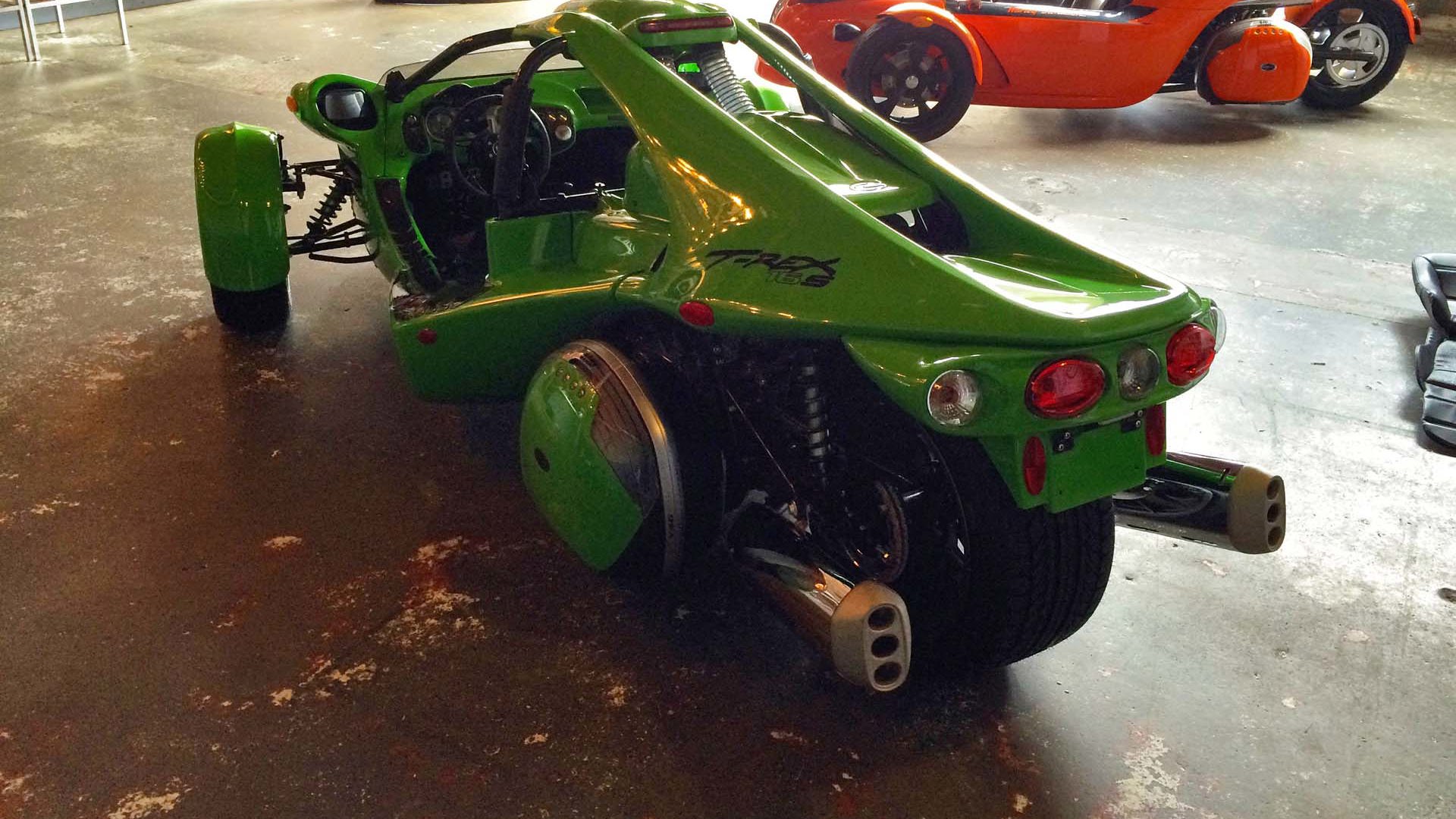
“So is it a sports car or a motorcycle?” I asked André Morissette, President of Campagna, standing proudly beside the T-Rex.
“No,” he unhelpfully responded.
“However, in Ontario, it’s registered as a motorcycle.” Classic misunderstanding.
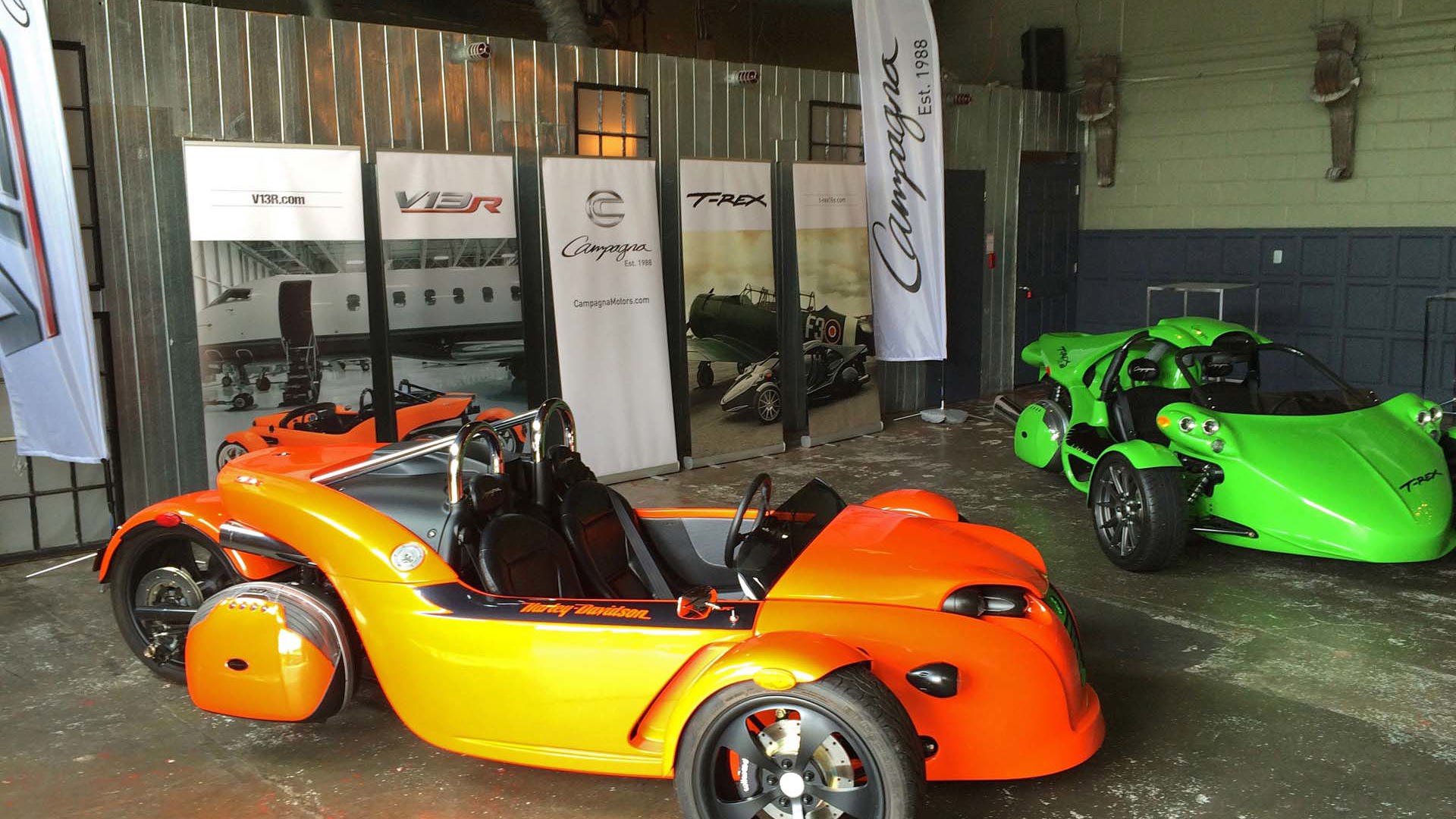
Following a long provincial tradition of airtight backsidedness, Ontario simply didn’t know how to rate these vehicles. Was the T-Rex a car? Was the V13R a motorcycle? So, for 21 years, the Ministry of Transportation simply didn’t rate them at all, shutting Campagna out of the Ontario market. If you saw one on our roads, it had a Quebec license plate – which did little to assuage any envy.
Now, following an equally long tradition of dysfunctional compromise, Ontario has rated the T-Rex and V13R as both and neither. Meaning?
With a G license, your basic Ontario driver’s permit, you can now register one of these Big Wheels on nuclear steroids for our perennially dodgy roads. But you also have to wear a motorcycle helmet if you want to drive them here.
Yes, a G license and a motorcycle helmet is all you need. It’s like giving someone who’s had a pet cat for the past twenty months a wooden chair and the keys to the lion cage.

Why the wait?
The original invitation for Campagna’s major press event requested our presence for 3 pm in deepest downtown Toronto. What a classic Montrealer’s misunderstanding of the idiocy of Toronto traffic. To avoid this city’s quotidian three-hour conga line, you want to be quitting the downtown by 3pm, latest. Even then, there’s no guarantee you won’t experience plenty of white-knuckled drama and unexplainable halts on clear, dry days. So I rode a bicycle and arrived at about 2:50 pm.
The hosts were clearly not ready – washing the floor, setting up chairs and buffing their roadsters to an incandescent shine. Turns out the event had been postponed to 3:30; they just didn’t tell some of us. Fortunately there was a bar and, understanding the idiocy of Toronto traffic, I was not driving.
We walked around the two three-wheelers on display. A couple of us removed the steering wheel and got in. They’re not roomy – we had to suck in our gut – but they’d be a hell of a ride. The combination of two wheels up front and one in the back delivers a mixed message: you’re driving a stable racing car with the speed and agility of a motorcycle.

The centre of gravity of the T-Rex was once described as a foot below the ground. People have forgotten there’s not a fourth wheel behind them – which connotes a more confident driver (rider? We still haven’t solved the motorcycle/car dilemma).
By 4 pm, they still hadn’t officially begun whatever extra special event they’d planned, beyond serving wine. I was starting to wonder whether Morissette and company were exacting revenge for having to wait since 1998 for recognition in Ontario. They finally kicked off at about 4:10pm. The “special event” was a speech by Morissette, backed up with the offer of free brochures. Oh, and the wine. Fortunately all were quite good.
“Ontario’s the last frontier.”
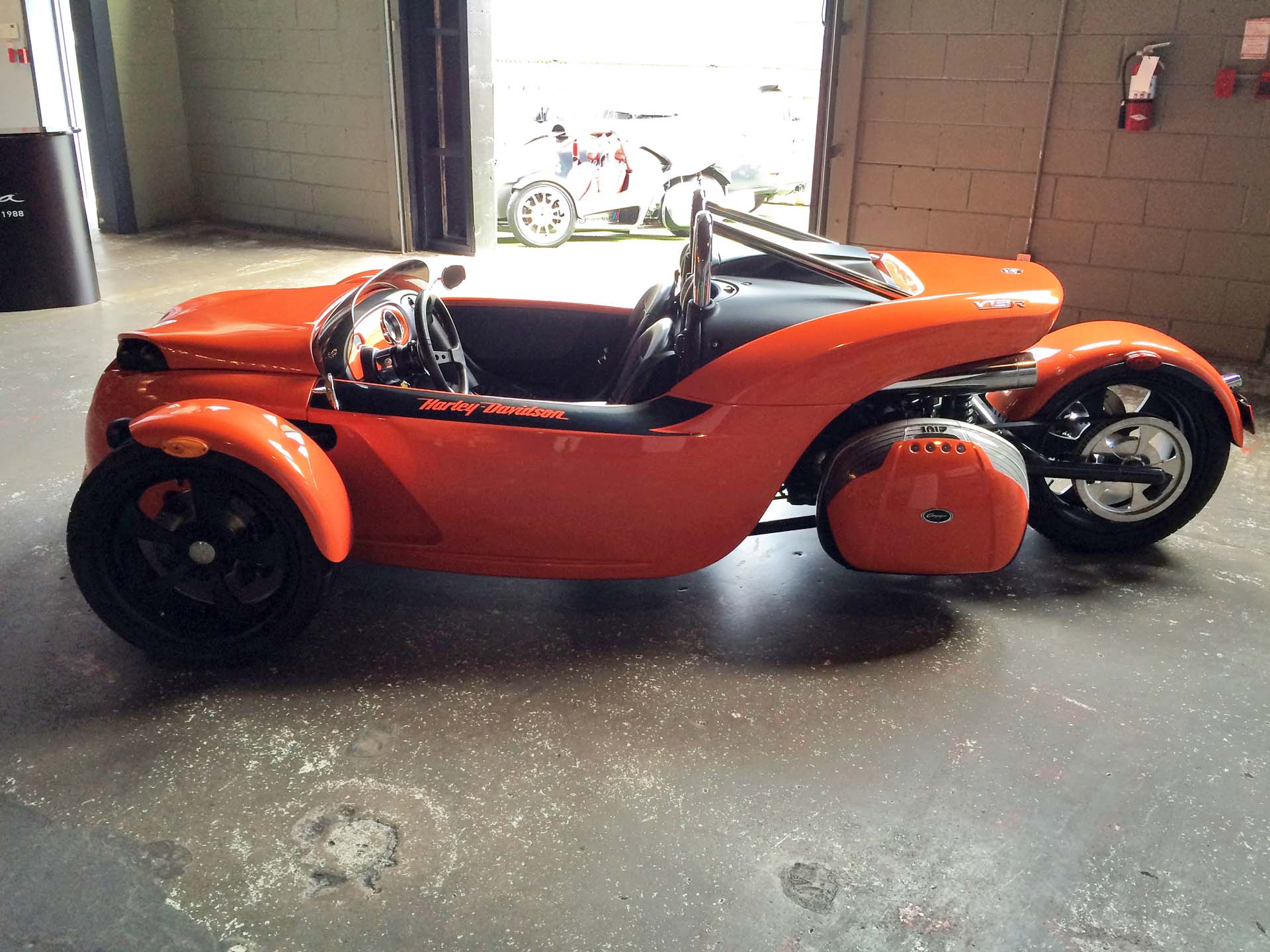
Morissette is heavyset (hey, that rhymes!) and short, exuding charisma with a boyish enthusiasm. His love for Campagna’s products is infectious and his palpable excitement grows as he talks about “two different machines, powered by different powertrains, and they [each] address a different type of customer.” Sure: one is a wealthy adrenaline junky and the other a well-heeled thrill-seeker.
Campagna uses motorcycle motors because “they’re lightweight, compact and the best bang for the buck in terms of power-to-weight ratio. We’re not trying to be the most powerful vehicle on the planet. We want to be the vehicle that best uses the power it has and is the lightest vehicle possible. ” Several heads in the room are nodding their approval.
Campagna’s three-wheelers have been sold in markets “all over the world: in Japan, the Middle East, Europe.” And finally, now, to their next-door neighbours and biggest trade partners. Sorry, I’m tempted to blurt.
Our host threw out a few other wonderful stats, increasing our desire for test drives. “The T-Rex has 160 hp and weighs just over 1,000 pounds.” Translation? It’s a torpedo with steering.
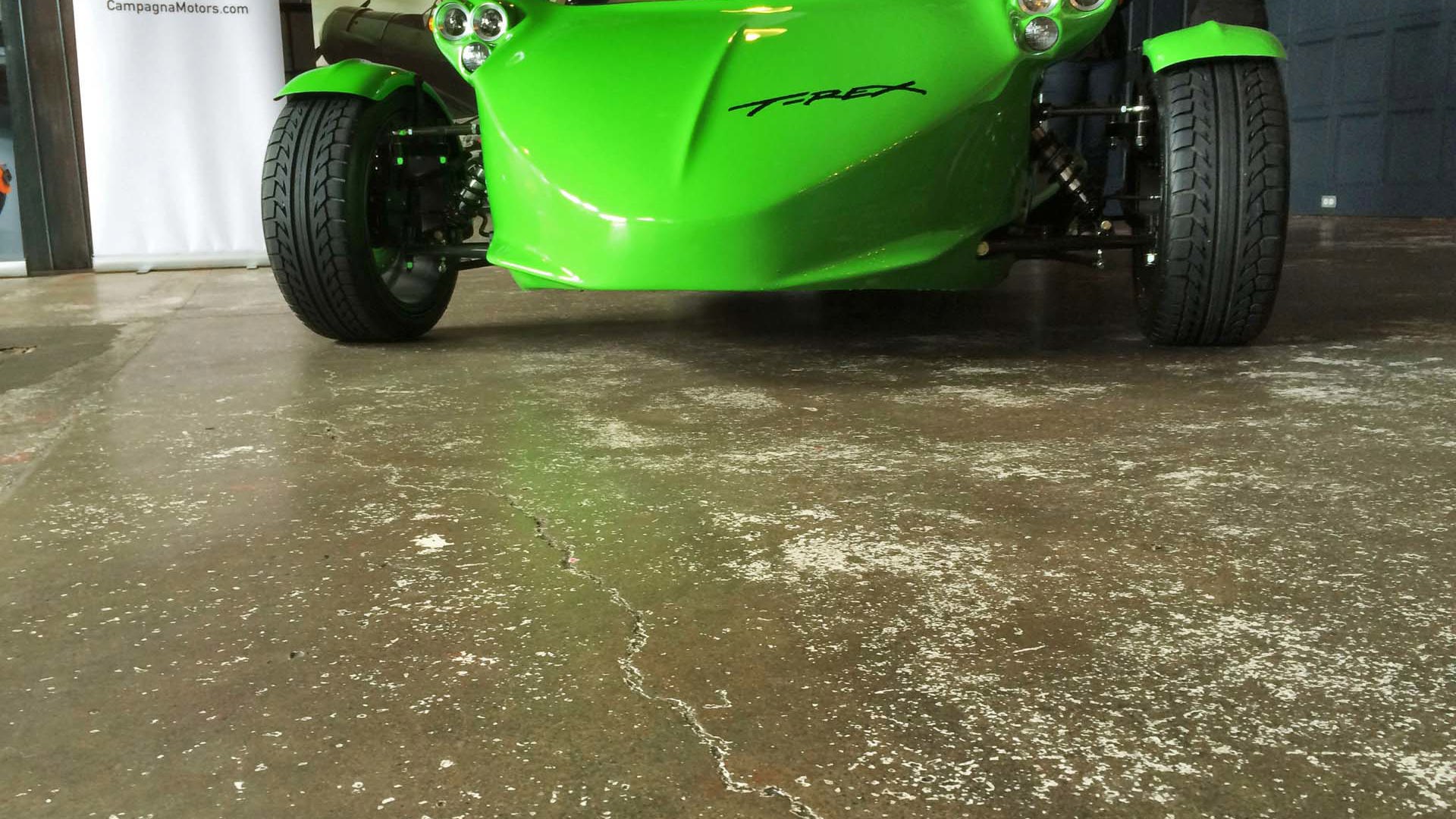
“It goes from 0 to 100kph in 3.5 seconds.”
But it took 1.5 hours to begin a speech.
“The lateral g-force that you can take on something like that is around 1.3. So this is like a race car that you can legally take on the road.” Everyone in the room wants one.
Campagna’s a specialty company and comfortable with its niche. There are only about 2,500 of its products in the world with “between 500 and 600” still in Quebec. It takes 40 man-hours for the 20-person work crew to produce each one.
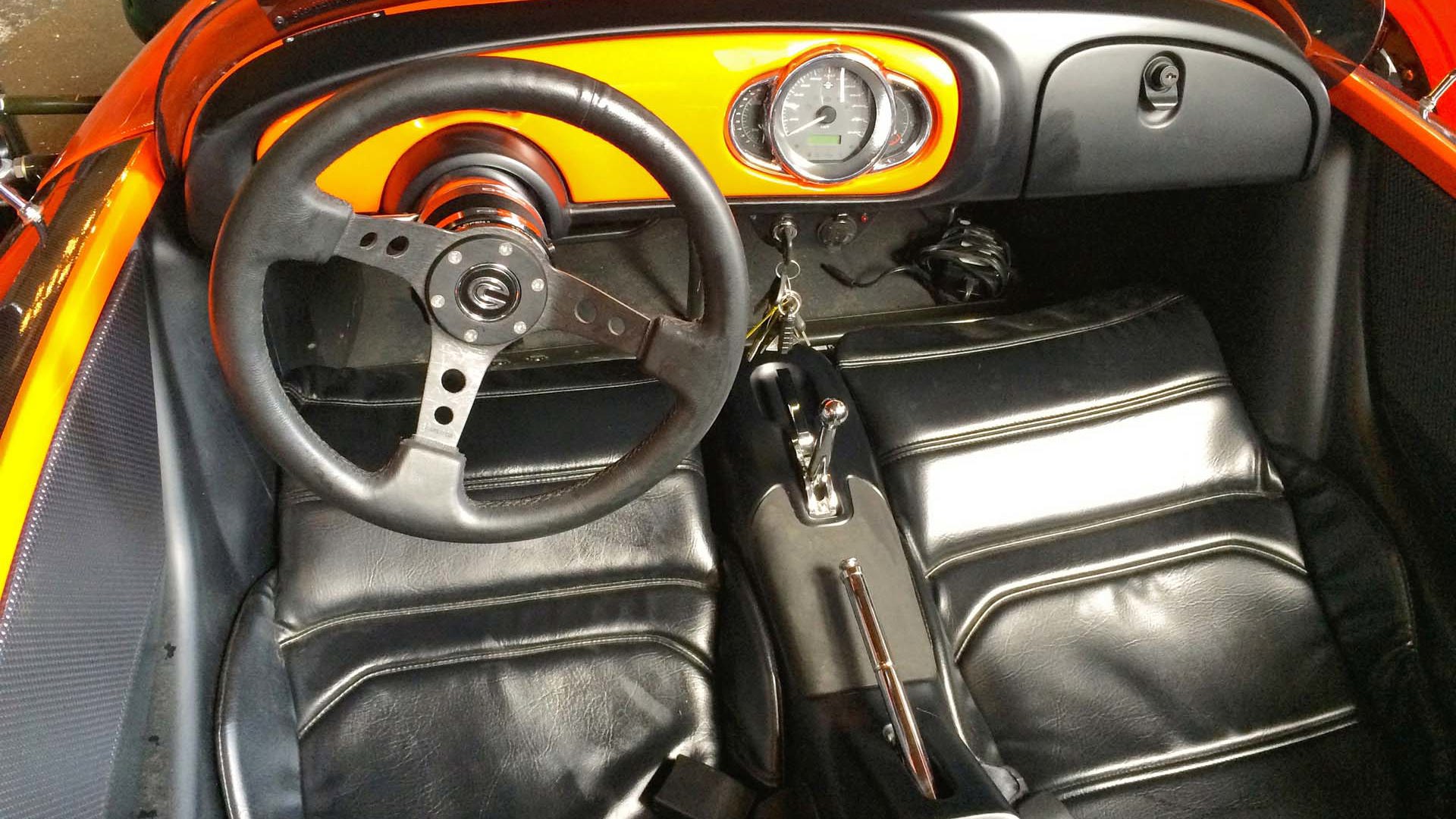
The V13R has been on the market for five years. It features a Harley-Davidson drivetrain. (They didn’t start it up in the close quarters of the press event, sparing our eardrums.)
Just as impressive is the sheer muscular beauty of the T-Rex. Its designer, Canadian Paul Deutschman of Corvette Callaway fame, once said “Great design is the sweet spot between engineering and styling.” Deutschman nailed it when he designed the T-Rex shell back in 1992. That’s a long time by any standard. In terms of design, it’s the Pliocene age.
Says Morissette, it’s “a design that stood the test of time. You look at it today and it’s still modern looking.” Indeed. By now, nearly all the heads in the room are nodding.
Then he adds, “but it’s ready for a re-fresh.” Intriguing tease, that.
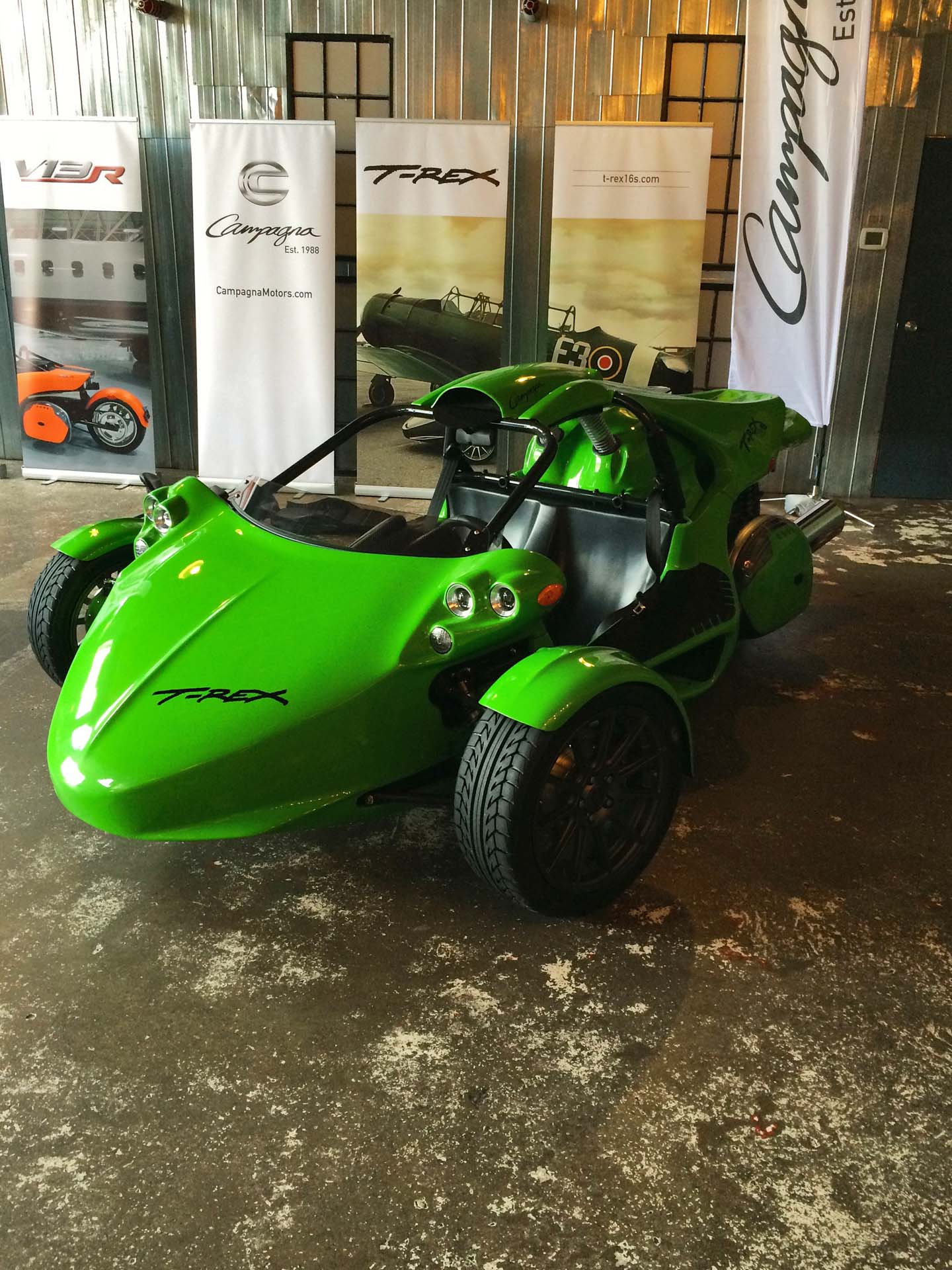
Are they thinking of adding or subtracting a wheel?
“No. We’re looking at taking the T-Rex design into a second generation. But we want to stay true to [three wheels] and focus on that. It’s pretty busy in the four-wheel market and the two-wheel industry. The three-wheeler is where we come from. We want to build on that, increasing power and reducing weight.” Given that combination, “we’re also kind of on the fence in the electric world.”
The new T-Rex will probably not have an electric version, though Campagna definitely wants to make a splash in that market. He just wonders “is it going to be a production vehicle or some kind of prototype to whet the public appetite as a recreational vehicle?” What does he mean by that?
A T-Rex “is definitely not an everyday driver to go and do your errands. These vehicles are used for the back roads and to go to Manitoulin Island.” Oh, it’s a prepared tidbit for Ontarians. “Usually they’re ridden in groups, just like a motorcycle is being used. So if you have an electric vehicle that has [a] 100km need for recharge, you don’t want to be the only one in the group who says ‘Sorry guys, I gotta pull over and recharge, but I’ll meet you at the hotel.’ It kind of kills the fun.
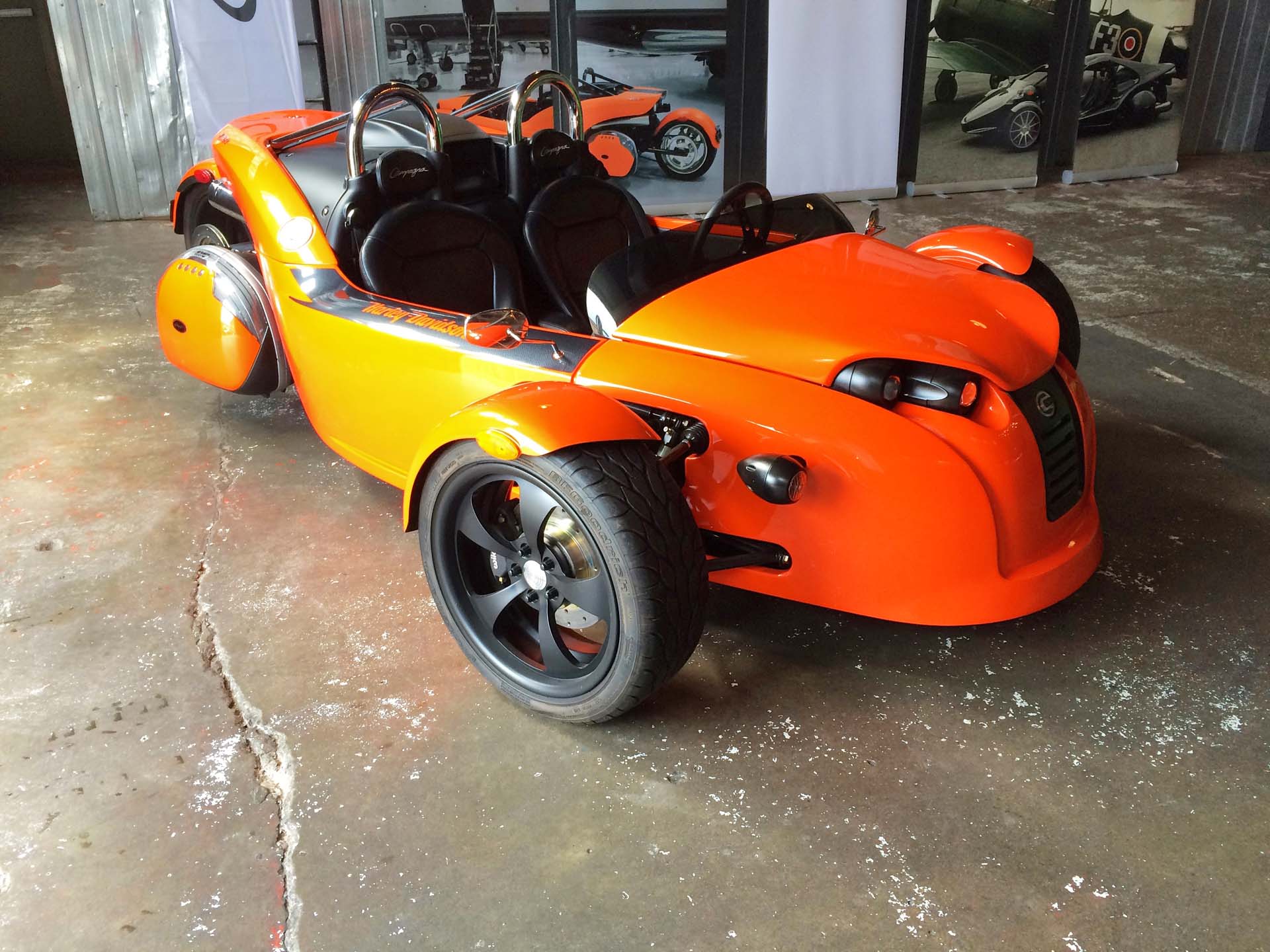
“But we also know that within the next five years, batteries will improve in weight and in price. So the equations might make sense, five or ten years down the road. That’s why we’ve begun thinking – but as a product ready to go to market . . . .” He drifts off. I ask if they’re considering a new model? “Always!”
Any plans for something practical?
He’s slightly offended at the heresy. “I haven’t seen any such thing from Lamborghini, Ferrari or from Ducati. We have to stick to who we are and our DNA is performance, fun and style. Practical? Maybe, we’ll leave that for others.” I expect someone in Ontario will heed the call.



















